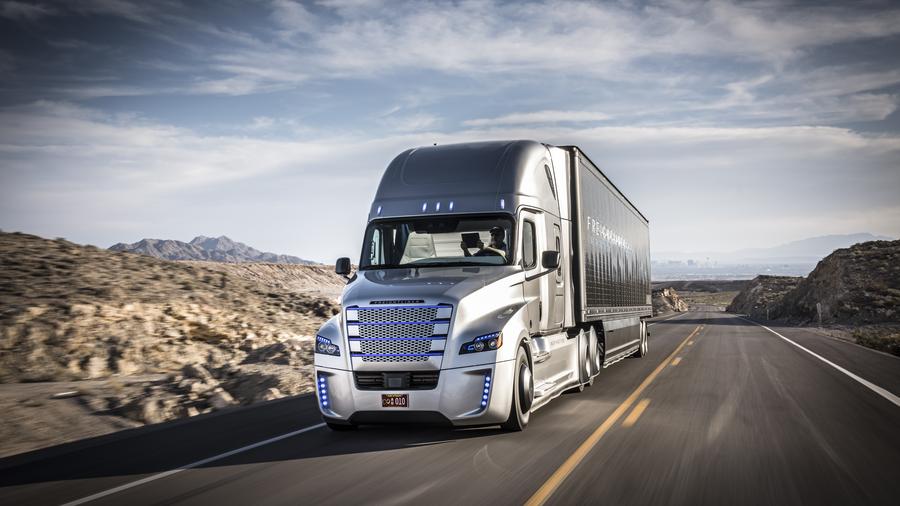Self-driving trucks manufactured by Daimler Trucks North America have hit the highways and byways of Nevada.
DTNA, the Portland-based division of Germany-based Daimler AG, received a license from the state of Nevada to operate its Freightliner Inspiration Truck. Equipped with an array of advanced sensors and computers, the truck can drive itself on freeways.
In the unveiling of the Inspiration, Nevada Gov. Brian Sandoval attached Nevada plates to one of two trucks in existence in a high-drama event on the Hoover Dam on Tuesday.
Sandoval joined Martin Daum, president and CEO of Daimler Trucks North America, for an inaugural trip with the truck in autonomous mode. While the trucks are designed to drive themselves and respond to road conditions, there must be a driver at the wheel.
The Highway Pilot autonomous system maintains the legal speed, stays in the selected lane, maintains a safe braking distance from other vehicles and slows or stops the vehicle based on traffic and road conditions. It is chiefly designed to operate on the freeway. The driver is responsible for exiting the highway, driving on local roads and pulling into loading docks for making deliveries.
Some of the autonomous vehicle systems in the concept vehicle are included in Freightliner's Cascadia Evolution, its current commercial product.
It is the first license for autonomous commercial trucks to operate on open public highways in the U.S., according to Daimler. For the first run, Wolfgang Bernard, a member of the board of management for Daimler AG's Trucks & Buses division, sat at the controls.
Daimler says the technology improves safety and holds the promise of lowering fuel use and reducing highway congestion.
